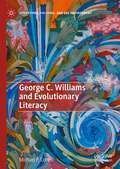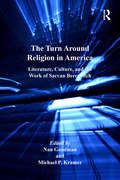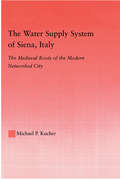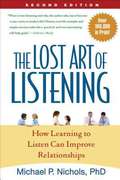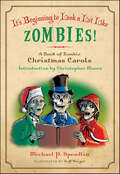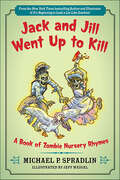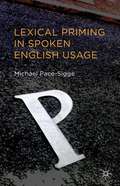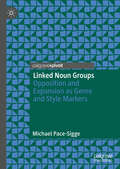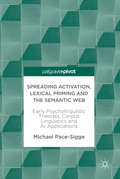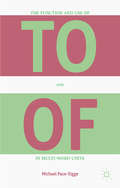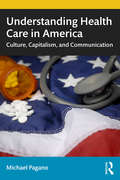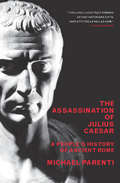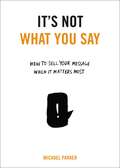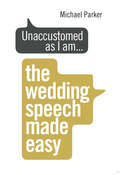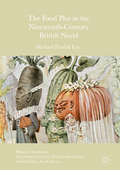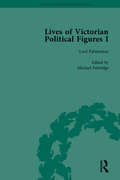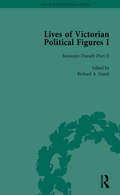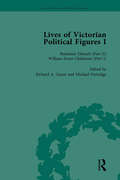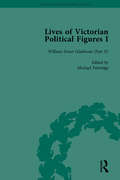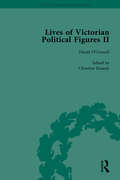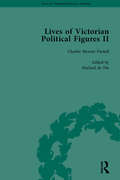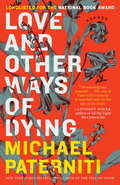- Table View
- List View
George C. Williams and Evolutionary Literacy (Literatures, Cultures, and the Environment)
by Michael P. CohenIn this book, a case study of a humanistic reading of an essential evolutionary theorist, George C. Williams (May 12, 1926–September 8, 2010), the author contends that certain classic works of evolutionary theory and history are the most important nature writing of recent times. What it means to be scientifically literate—is essential for humanistic scholars, who must ground themselves with literary reading of scientific texts. As the most influential American evolutionary theorist of the second half of the twentieth century, Williams masters critique, frames questions about adaptation and natural selection, and answers in a plain, aphoristic writing style. Williams aims for parsimony—to “recognize adaptation at the level necessitated by the facts and no higher”—through a minimalist writing style. This voice articulates a powerful process that operates at very low levels by blind and selfish chance at the expense of its designed products, using purely trial and error.
The Turn Around Religion in America: Literature, Culture, and the Work of Sacvan Bercovitch
by Michael P. KramerPlaying on the frequently used metaphors of the 'turn toward' or 'turn back' in scholarship on religion, The Turn Around Religion in America offers a model of religion that moves in a reciprocal relationship between these two poles. In particular, this volume dedicates itself to a reading of religion and of religious meaning that cannot be reduced to history or ideology on the one hand or to truth or spirit on the other, but is rather the product of the constant play between the historical particulars that manifest beliefs and the beliefs that take shape through them. Taking as their point of departure the foundational scholarship of Sacvan Bercovitch, the contributors locate the universal in the ongoing and particularized attempts of American authors from the seventeenth century forward to get it - whatever that 'it' might be - right. Examining authors as diverse as Pietro di Donato, Herman Melville, Miguel Algarin, Edward Taylor, Mark Twain, Robert Keayne, Nathaniel Hawthorne, Paule Marshall, Stephen Crane, Ralph Waldo Emerson, and Joseph B. Soloveitchik, among many others-and a host of genres, from novels and poetry to sermons, philosophy, history, journalism, photography, theater, and cinema-the essays call for a discussion of religion's powers that does not seek to explain them as much as put them into conversation with each other. Central to this project is Bercovitch's emphasis on the rhetoric, ritual, typology, and symbology of religion and his recognition that with each aesthetic enactment of religion's power, we learn something new.
The Water Supply System of Siena, Italy: The Medieval Roots of the Modern Networked City (Studies In Medieval History And Culture Ser. #29)
by Michael P. KucherThe book reviews scholarly literature and archival sources including maps and diagrams, to better situate Siena's achievement in urban history and broadens our understanding of medieval technology and urban life.
Metaphors in International Relations Theory
by Michael P. MarksMetaphors constitute a fundamental way in which humans understand the world around them. This book offers a comprehensive analysis of metaphors in theories of international relations. Until recently, conscious attention to metaphors in theories of international relations has been haphazard and sporadic. This book examines the metaphors that inform the major paradigms in international relations theory. Readers will discover that the vast majority of the terminology cataloguing, defining, and naming theories, concepts, and analytical tools pertaining to the study of international relations are metaphorical in nature. The book concludes that metaphors are an essential element in all aspects of international relations theory.
The Lost Art of Listening: How Learning to Listen Can Improve Relationships (2nd edition)
by Michael P. NicholsNichols (psychology, College of William and Mary) provides a thoughtful guide to the art of listening, addressing the reasons why we so often fail to listen attentively to others, as well as providing strategies for getting oneself heard. Clear examples demonstrate techniques for better communication in both personal and professional relationships. Lacks an index and a bibliography. Annotation c. by Book News, Inc. , Portland, Or.
It's Beginning to Look a Lot Like Zombies: A Book of Zombie Christmas Carols
by Michael P. SpradlinThe snow is falling, the holidays are approaching and…It’s Beginning to Look a Lot Like Zombies! This delightfully depraved book of classic Zombie Christmas carols by Michael P. Spradlin is guaranteed to spread Yuletide cheer to all those good boys and ghouls who devoured the monster New York Times bestsellers Pride and Prejudice and Zombies and World War Z, as well as fans of 28 Days Later and Shaun of the Dead. With an introduction by the inimitable Christopher Moore—bestselling author of Bloodsucking Fiends, You Suck, andthe classic “heartwarming tale of Christmas terror” The Stupidest Angel—It’s Beginning to Look a Lot Like Zombies is a great gift for stuffing into a Christmas stocking…provided you remove the bloody severed foot first!
Jack and Jill Went Up to Kill: A Book of Zombie Nursery Rhymes
by Michael P. SpradlinMichael P. Spradlin (outrageous words) and Jeff Weigel (eye-popping illustrations)—the seriously twisted minds that brought you the New York Times bestselling Christmas carol tome It’s Beginning to Look a Lot Like Zombies and Every Zombie Eats Somebody Sometime, a book of Zombie love songs—have arisen once more, this time to devour Mother Goose raw! Jack and Jill Went Up to Kill is a hilarious volume of zombie nursery rhymes designed to tickle the (exposed) funnybone of every World War Z, Shaun of the Dead, Zombieland, Pride and Prejudice and Zombies, and The Walking Dead fan on either side of the grave!
Chrono Trigger (Boss Fight Books)
by Michael P. WilliamsWhen Boss Fight Books first gave fans the chance to vote for the game they most wanted to read a book about, they chose the epic time travel RPG Chrono Trigger. Featuring new interviews with translator Ted Woolsey and DS retranslator Tom Slattery, Michael P. Williams's book delves deep into connections between Crono&’s world and ours, including Chrono Trigger's take on institutions such as law and religion, how the game's heroes fit and defy genre conventions, and the maddening logical headaches inherent in any good time travel plot. From the Magus dilemma to the courtroom scene, find out why many consider this game the high point in the entire role-playing genre in this in-depth examination of Chrono Trigger, a ton of fun and a true work of art.
Lexical Priming In Spoken English Usage
by Michael Pace-SiggeThis book shows that over forty years of psychological laboratory-based research support the claims of the Lexical Priming Theory. It examines how Lexical Priming applies to the use of spoken English as the book provides evidence that Lexical Priming is found in everyday spoken conversations.
Linked Noun Groups: Opposition and Expansion as Genre and Style Markers
by Michael Pace-SiggeThis book provides a corpus-led analysis of multi-word units (MWUs) in English, specifically fixed pairs of nouns which are linked by a conjunction, such as 'mum and dad', 'bride and groom' and 'law and order'. Crucially, the occurrence pattern of such pairs is dependent on genre, and this book aims to document the structural distribution of some key Linked Noun Groups (LNGs). The author looks at the usage patterns found in a range of poetry and fiction dating from the 17th to 20th century, and also highlights the important role such binomials play in academic English, while acknowledging that they are far less common in casual spoken English. His findings will be highly relevant to students and scholars working in language teaching, stylistics, and language technology (including AI).
Spreading Activation, Lexical Priming and the Semantic Web: Early Psycholinguistic Theories, Corpus Linguistics and AI Applications
by Michael Pace-SiggeThis book explores the interconnections between linguistics and Artificial Intelligence (AI) research, their mutually influential theories and developments, and the areas where these two groups can still learn from each other. It begins with a brief history of artificial intelligence theories focusing on figures including Alan Turing and M. Ross Quillian and the key concepts of priming, spread-activation and the semantic web. The author details the origins of the theory of lexical priming in early AI research and how it can be used to explain structures of language that corpus linguists have uncovered. He explores how the idea of mirroring the mind’s language processing has been adopted to create machines that can be taught to listen and understand human speech in a way that goes beyond a fixed set of commands. In doing so, he reveals how the latest research into the semantic web and Natural Language Processing has developed from its early roots. The book moves on to describe how the technology has evolved with the adoption of inference concepts, probabilistic grammar models, and deep neural networks in order to fine-tune the latest language-processing and translation tools. This engaging book offers thought-provoking insights to corpus linguists, computational linguists and those working in AI and NLP.
The Function and Use of TO and OF in Multi-Word Units
by Michael Pace-SiggeThe highly frequent word items TO and OF are often conceived merely as prepositions, carrying little meaning in themselves. This book disputes that notion by analysing the usage patterns found for OF and TO in different sets of text corpora.
Communication Case Studies for Health Care Professionals: An Applied Approach
by Michael PaganoThe second edition builds on the first with the addition of 11 new cases and theoretical discussions of interpersonal, gender, intercultural, organizational, and media communication. Additionally, the new edition analyzes each scenario in detail to facilitate broader use by an inter professional team and expand awareness of the specific skills needed by each health care professional.
Understanding Health Care in America: Culture, Capitalism, and Communication
by Michael PaganoThis book examines the current state of American health care using a social science lens to focus on the interdependent, intercultural, economic, and communication aspects of access and delivery. This text explores how the cultures of health care organizations, health professions, governments, and capitalism, as well as communication, all contribute to a disease-focused, economically driven, technology-centered health care system. It seeks to understand 21st century health care from a macro-level view based on historical realizations and the current plethora of interdependent, but self-serving realities that provide few, if any, incentives for organizational collaboration and change. The fact that the most expensive health care system in the world does not provide the healthiest outcomes is a driving force in this exploration. By reflecting on American values and beliefs regarding health care from philosophical, clinical, communication, and cost perspectives, this text is designed to encourage an organizational transformation at every level, from government to providers to patients. This comprehensive survey is an important guide for those studying, or working in, health care professions, as well as health care policy and administration. It should also be of interest to any reader who seeks to better understand U.S. health care policy from social science, economic, and/or health communication perspectives.
The Assassination of Julius Caesar: A People's History of Ancient Rome (A\new Press People's History Ser.)
by Michael Parenti&“A provocative history&” of intrigue and class struggle in Ancient Rome—&“an important alternative to the usual views of Caesar and the Roman Empire&” (Publishers Weekly). Most historians, both ancient and modern, have viewed the Late Republic of Rome through the eyes of its rich nobility—the 1 percent of the population who controlled 99 percent of the empire&’s wealth. In The Assassination of Julius Caesar, Michael Parenti recounts this period, spanning the years 100 to 33 BC, from the perspective of the Roman people. In doing so, he presents a provocative, trenchantly researched narrative of popular resistance against a powerful elite. As Parenti carefully weighs the evidence concerning the murder of Caesar, he adds essential context to the crime with fascinating details about Roman society as a whole. In these pages, we find reflections on the democratic struggle waged by Roman commoners, religious augury as an instrument of social control, the patriarchal oppression of women, and the political use of homophobic attacks. The Assassination of Julius Caesar offers a whole new perspective on an era thought to be well-known. &“A highly accessible and entertaining addition to history.&” —Book Marks
It's Not What You Say: How to Sell Your Message When It Matters Most
by Michael ParkerNo matter what the speaking challenge is, this inspirational, cleverly illustrated book will help readers perform with passion, power and persuasion—at the top of their game. Whether chasing a job, planning a pitch, giving a speech at a wedding, presenting to one or one thousand people, readers of It's Not What You Say will discover how to: • Use the rule of three to win any audience over • Prepare so you can be yourself – but better • Embrace the unknown and conquer any fear Capturing a life time&’s work in the art of persuasive communication, this powerful book reveals the principles, tools and tricks to help you become a courageous, memorable, stand-out speaker.
Unaccustomed as I am...: The Wedding Speech Made Easy
by Michael ParkerAll wedding types will be catered for: big, small, religious, second marriage, atheist, straight, same-sex, church, field... All speakers will be addressed: bride, groom, father, mother, best woman and literally everyone in between... All eventualities will be planned for: mic failures, drunk guests, missing brides, smashed glasses, weeping FOBs, forgotten words... All of which will be delightfully and wittily illustrated, with a mix of little-known wedding facts and a whole host of inspirational (or not) quotations.
The Food Plot in the Nineteenth-Century British Novel
by Michael Parrish LeeThis book is about food, eating, and appetite in the nineteenth-century British novel. While much novel criticism has focused on the marriage plot, this book revises the history and theory of the novel, uncovering the "food plot" against which the marriage plot and modern subjectivity take shape. With the emergence of Malthusian population theory and its unsettling links between sexuality and the food supply, the British novel became animated by the tension between the marriage plot and the food plot. Charting the shifting relationship between these plots, from Jane Austen's polite meals to Bram Stoker's bloodthirsty vampires, this book sheds new light on some of the best-know works of nineteenth-century literature and pushes forward understandings of narrative, literary character, biopolitics, and the novel as a form. From Austen to Zombies, Michael Parrish Lee explores how the food plot conflicts with the marriage plot in nineteenth-century literature and beyond, and how appetite keeps rising up against taste and intellect. Lee's book will be of interest to Victorianists, genre theorists, Food Studies, and theorists of bare life and biopolitics. - Regenia Gagnier, Professor of English, University of Exeter In The Food Plot Michael Lee engages recent and classic scholarship and brings fresh and provocative readings to well worked literary critical ground. Drawing upon narrative theory, character study, theories of sexuality, and political economy, Professor Lee develops a refreshing and satisfyingly deep new reading of canonical novels as he develops the concept of the food plot. The Food Plot should be of interest to specialists in the novel and food studies, as well as students and general readers. - Professor April Bullock, California State University, Fullerton, USA
Lives of Victorian Political Figures, Part I, Volume 1: Palmerston, Disraeli and Gladstone by their Contemporaries
by Michael Partridge Richard Gaunt Nancy LoPatin-LummisAims to bring alive, through the eyes of their contemporaries, three of the greatest political figures of the Victorian era - Henry, third Viscount Palmerston, Benjamin Disraeli and William Gladstone. This four-volume set draws together various documents including journals and diaries, pamphlets, correspondence, and other ephemeral literature. Volume 1 covers the political life of Lord Palmerston.
Lives of Victorian Political Figures, Part I, Volume 2: Palmerston, Disraeli and Gladstone by their Contemporaries
by Michael Partridge Richard Gaunt Nancy LoPatin-LummisAims to bring alive, through the eyes of their contemporaries, three of the greatest political figures of the Victorian era - Henry, third Viscount Palmerston, Benjamin Disraeli and William Gladstone. This four-volume set draws together various documents including journals and diaries, pamphlets, correspondence, and other ephemeral literature. Volume 2 covers the political life of Benjamin Disraeli (Part I).
Lives of Victorian Political Figures, Part I, Volume 3: Palmerston, Disraeli and Gladstone by their Contemporaries
by Michael Partridge Richard Gaunt Nancy LoPatin-LummisAims to bring alive, through the eyes of their contemporaries, three of the greatest political figures of the Victorian era - Henry, third Viscount Palmerston, Benjamin Disraeli and William Gladstone. This four-volume set draws together various documents including journals and diaries, pamphlets, correspondence, and other ephemeral literature. Volume 3 covers the political life of Benjamin Disraeli (Part II) and William Ewart Gladstone (Part I).
Lives of Victorian Political Figures, Part I, Volume 4: Palmerston, Disraeli and Gladstone by their Contemporaries
by Michael Partridge Richard Gaunt Nancy LoPatin-LummisAims to bring alive, through the eyes of their contemporaries, three of the greatest political figures of the Victorian era - Henry, third Viscount Palmerston, Benjamin Disraeli and William Gladstone. This four-volume set draws together various documents including journals and diaries, pamphlets, correspondence, and other ephemeral literature. Volume 4 covers the political life of William Ewart Gladstone (Part II).
Lives of Victorian Political Figures, Part II, Volume 1: Daniel O'Connell, James Bronterre O'Brien, Charles Stewart Parnell and Michael Davitt by their Contemporaries
by Michael Partridge Nancy LoPatin-LummisLooks at the lives and politics of four of the key players in the independence and labour movements of the 19th century: Daniel O'Connell (1775-1847); Charles Stewart Parnell (1846-91); Michael Davitt (1846-1906); and James Bronterre O'Brien (1805-64). Volume 1 looks at the life of Daniel O’Connell.
Lives of Victorian Political Figures, Part II, Volume 2: Daniel O'Connell, James Bronterre O'Brien, Charles Stewart Parnell and Michael Davitt by their Contemporaries
by Michael Partridge Nancy LoPatin-LummisLooks at the lives and politics of four of the key players in the independence and labour movements of the 19th century: Daniel O'Connell (1775-1847); Charles Stewart Parnell (1846-91); Michael Davitt (1846-1906); and James Bronterre O'Brien (1805-64). Volume 2 looks at the life of Charles Stewart Parnell.
Love and Other Ways of Dying
by Michael PaternitiIn this moving, lyrical, and ultimately uplifting collection of essays, Michael Paterniti turns a keen eye on the full range of human experience, introducing us to an unforgettable cast of everyday people. Michael Paterniti is one of the most original and empathic storytellers working today. His writing has been described as "humane, devastating, and beautiful" by Elizabeth Gilbert, "spellbinding" by Anthony Doerr, and "expansive and joyful" by George Saunders. In the seventeen wide-ranging essays collected for the first time in Love and Other Ways of Dying, he brings his full literary powers to bear, pondering happiness and grief, memory and the redemptive power of human connection. In the remote Ukranian countryside, Paterniti picks apples (and faces mortality) with a real-life giant; in Nanjing, China, he confronts a distraught jumper on a suicide bridge; in Dodge City, Kansas, he takes up residence at a roadside hotel and sees, firsthand, the ways in which the racial divide turns neighbor against neighbor. In each instance, Paterniti illuminates the full spectrum of human experience, introducing us to unforgettable everyday people and bygone legends, exploring the big ideas and emotions that move us. Paterniti reenacts François Mitterrand's last meal in a rustic dining room in France and drives across America with Albert Einstein's brain in the trunk of his rental car, floating in a Tupperware container. He delves with heartbreaking detail into the aftermath of a plane crash off the coast of Nova Scotia, an earthquake in Haiti, and a tsunami in Japan--and, in searing swirls of language, unearths the complicated, hidden truths these moments of extremity teach us about our ability to endure, and to love. Michael Paterniti has spent the past two decades grappling with some of our most powerful subjects and incomprehensible events, taking an unflinching point of view that seeks to edify as it resists easy answers. At every turn, his work attempts to make sense of both love and loss, and leaves us with a profound sense of what it means to be human. As he writes in the Introduction to this book, "The more we examine the grooves and scars of this life, the more free and complete we become." Praise for Michael Paterniti "A fearless, spellbinding collection of inquiries by a brilliant, globally minded essayist whose writing is magic and whose worldview brims with compassion . . . Genius chefs, an eight-and-a-half-foot-tall giant, an earthquake, a jet crash, and a president who eats songbirds--the size of Michael Paterniti's curiosity is matched only by the size of his heart."--Anthony Doerr, author of All the Light We Cannot See "Michael Paterniti is a genius."--Elizabeth Gilbert, author of The Signature of All Things "Michael Paterniti is one of the best living practitioners of the art of literary journalism, able to fully elucidate and humanize the everyday and the epic. In his hands, every subject, every moment of personal or global upheaval, is treated with the same curiosity, respect, empathy, and clear-eyed wisdom."--Dave Eggers, author of The Circle "I have been waiting years for this collection. In each of these essays, Michael Paterniti unveils life for us, the beauty and heartbreak of it, as we would never see it ourselves but now can never forget it. Paterniti is brilliant--a rare master--and one of my favorite authors on earth."--Lily King, author of EuphoriaFrom the Hardcover edition.
